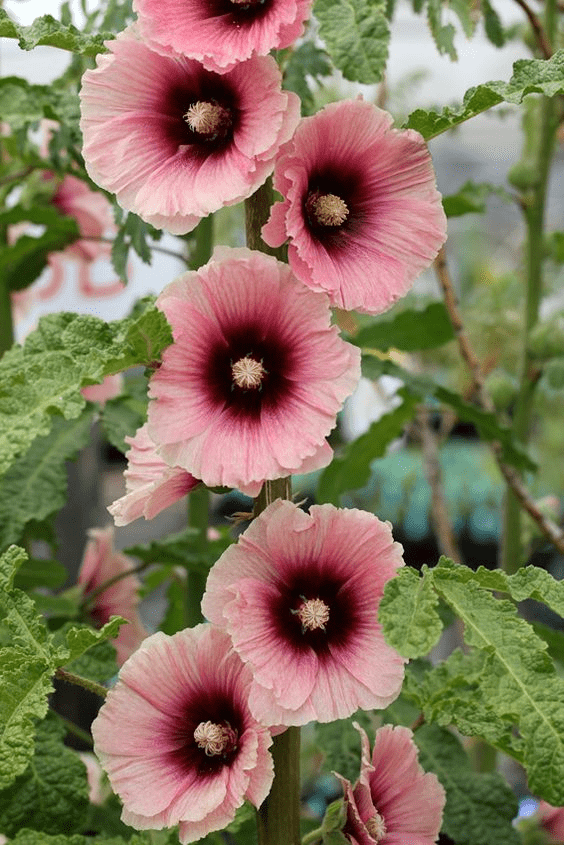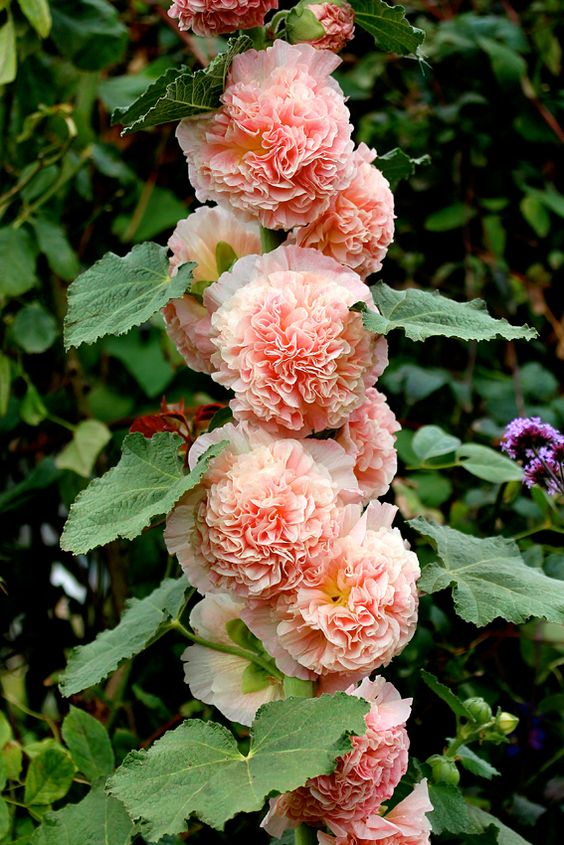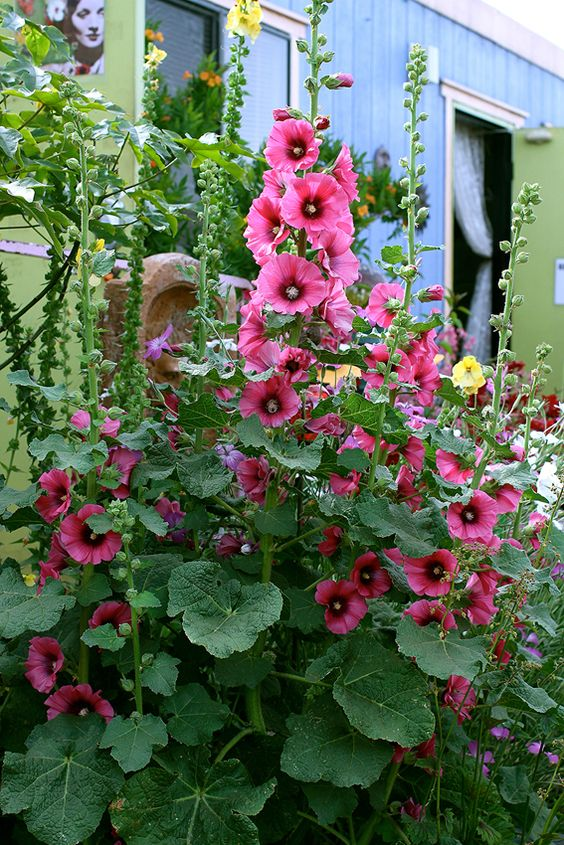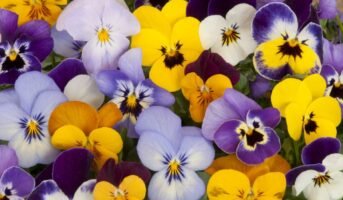Alcea rosea is a flowering plant that thrives in areas with low rainfall. It grows to be about 2 feet tall and has flowers that are pink, red, or white. The flowers have a mild scent that is reminiscent of citrus.
see also: New year rose

Source: Pinterest
Alcea rosea is often used as an ornamental plant due to its attractive appearance and blooming season. It can be used in gardens or containers because it doesn’t require much space to look pretty.
See also: Why makes the sweet-smelling Frangipani a must-have garden plant?
What is Alcea rosea?
Alcea rosea is a biennial, ornamental flowering plant belonging to the Malvaceae family. The plant self-sows and may appear like a perennial plant. It produces flowers in varied hues such as including red, pink, white, yellow, and orange.
Alcea rosea: Quick facts
| Botanical Name | Alcea rosea |
| Common Name | Hollyhock |
| Family | Malvaceae |
| Genus | Alcea |
| Plant Type | Herbaceous, Biennial |
| Mature Size | 6-8 feet tall, 1 to 2 feet wide |
| Cultivation | China, Europe |
| Benefits | Home decor, medicine |
Alcea rosea: Physical description

Source: Pinterest
Alcea rosea grows up to 8 feet in height and spreads out to about 2 feet. Its small pink flowers bloom in the summer and fall. The leaves of the plant are fernlike and reach up to 8 inches long. When it blooms, it produces white-pink flowers that have five petals each. Its seeds are covered in a thick layer of wax and can be spread all over the neighbourhood when they fall from the plant.
How to grow Alcea rosea

Source: Pinterest
Alcea rosea is a beautiful plant that is easy to grow and maintain. The plant will thrive in most indoor environments, but it can be difficult to keep the plant away from any water damage.
Grow Alcea rosea in a pot with drainage holes in the bottom of the container. Fill the container with potting soil mixed with some sand or gravel to provide drainage. Plant Alcea rosea seeds at least half an inch deep, and cover them with an inch of soil. To ensure that the roots remain robust and healthy, water frequently and maintain soil moisture at all times.
Alcea rosea will grow best indoors during the winter months, but you may be able to grow one outside if you have access to sunlight for at least part of each day. You can grow this plant outdoors also. Be sure to protect it from direct sunlight during summer months by covering it with a shade cloth during hot spells or by using an umbrella when necessary, and just don’t leave it unattended.
How to care for Alcea rosea
- Plant the Alcea rosea in a well-drained spot with full sun exposure.
- Water the plant frequently during its first few weeks after planting so that it doesn’t dry out too quickly after planting. These plants are very drought-tolerant, but they do need water regularly to grow properly.
- Cut back on watering once the soil is moist enough for you to step on without getting wet feet. And then maintain that level of moisture until fall when you will cut back even further on watering until cold weather arrives again in the autumn and winter months ahead of time.
- Temperate regions are the most suitable places to grow these plants. In the fall, early frosts can cause damage to late blooms, as some species can survive to minus 15 degrees Celsius. Since these plants are susceptible to rust, high humidity is not healthy for them.
- If you have fertile soil, fertilising every two to four weeks during bloom is unnecessary. However, if you have poor soil, fertilising every two to four weeks during bloom is also helpful. The most effective organic fertiliser for flowers is a high-nitrogen fish emulsion or organic flower fertiliser.
Maintenance of Alcea rosea
The care requirements may differ for the different species of Alcea rosea. Most of them are adaptable and cold-hardy plants. When growing these plants, make sure to choose a sheltered area protected from wind to avoid these tall plants from drooping. Space the individual plants, about 18 to 24 inches apart to allow good air circulation.
Benefits of Alcea rosea
Alcea rosea is grown widely for its medicinal properties. It had been used as an ancient herb for years. All the parts of the plant, including leaves, flowers and roots, are edible. They have wide health benefits.
Uses of Alcea rosea

Source: Pinterest
- Alcea rosea is a flowering plant that has been used for centuries to help treat skin conditions such as eczema and psoriasis.
- In addition to being used to treat acne, it has been demonstrated to aid in hair growth.
- To cure wounds, burns, and cuts, this plant’s leaves can be brewed into tea or made into a tincture.
- Alcea rosea may also be used for its astringent properties, which may aid in healing wounds and preventing scarring.
- The stems of this plant are used as a herbal tea or decoction to treat internal inflammation.
Is Alcea rosea toxic?
No, Alcea rosea is not toxic. You can plant it in your house without worrying about the toxicity of the plant. That being said, it might slightly irritate you or your pet’s skin.
FAQs
When this plant stops flowering, what should I do with it?
You can cut down the main stems of your hollyhock at the end of the growing season when most of the blooms have faded
How should hollyhocks be grown?
Despite their adaptability, hollyhocks prefer fertile, well-drained soil growing in full sun to grow their tallest flowers.
What is the most effective way to care for Alcea rosea?
A warm, sunny position is most beneficial for common hollyhocks, even though they can tolerate partial shade.
How long do hollyhocks last?
They last for two to three years on average.
Housing News Desk is the news desk of leading online real estate portal, Housing.com. Housing News Desk focuses on a variety of topics such as real estate laws, taxes, current news, property trends, home loans, rentals, décor, green homes, home improvement, etc. The main objective of the news desk, is to cover the real estate sector from the perspective of providing information that is useful to the end-user.
Facebook: https://www.facebook.com/housing.com/
Twitter: https://twitter.com/Housing
Email: [email protected]











